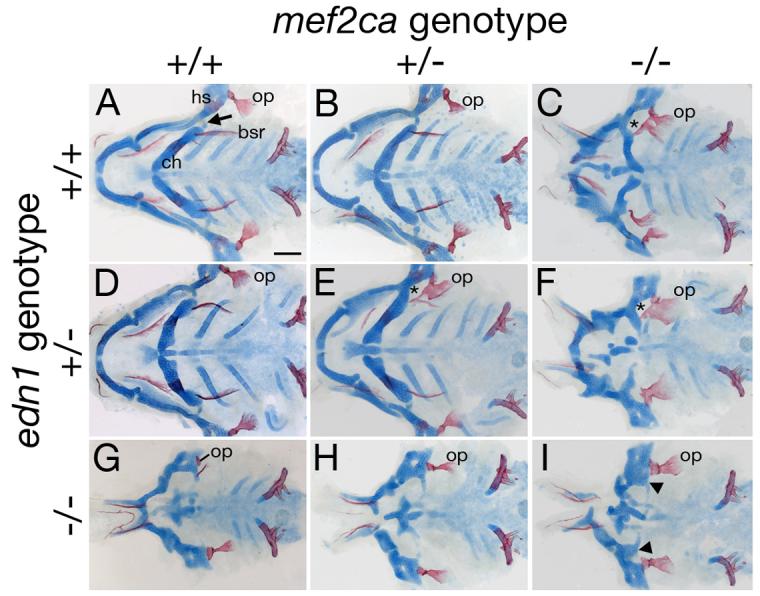Fig. 3.

Complex genetic interactions between mef2ca and edn1. Flat-mounted pharyngeal skeletons of 5 dpf fish stained for cartilage in blue and bone in red for fish of different mef2ca and edn1 genotypes. (A) In the wild-type second arch, a prominent fan-shaped opercle bone (op) articulates with the hyosymplectic (hs). Its serial homolog, the branchiostegal ray (bsr) appears saber-shaped and articulates with the ceratohyal (ch). We typically detect no phenotypes in edn1 or mef2ca single heterozygous classes (B and D), although rarely very mild phenotypes are seen in edn1 mutant heterozygotes (Table 2). (C) In mef2ca homozygous mutants, the opercle is enlarged, and the ventral branchiostegal ray is enlarged and transformed towards opercle morphology. The dorsal/ventral joint is lost (asterisk showing joint loss in the hyoid arch). The hyoid ventral cartilage is reduced. (E) Fish heterozygous for both mef2ca and edn1 (mef2ca+/−; edn1+/−) display mef2ca mutant phenotypes such as joint loss (asterisk) and enlarged opercles fused to malformed branchiostegal rays. (F) Heterozygosity of edn1 enhances the mef2ca cartilage and bone phenotypes (compare to C, and see Table 2). (G-I) Heterozygosity for mef2ca mutation (H) partially and subtly rescues cartilage and bone phenotypes in edn1−/− homozygous mutants (G), while homozygosity for mef2ca mutation more significantly partially rescues hyoid cartilage and bone phenotypes of edn1 homozygous mutants (I).
